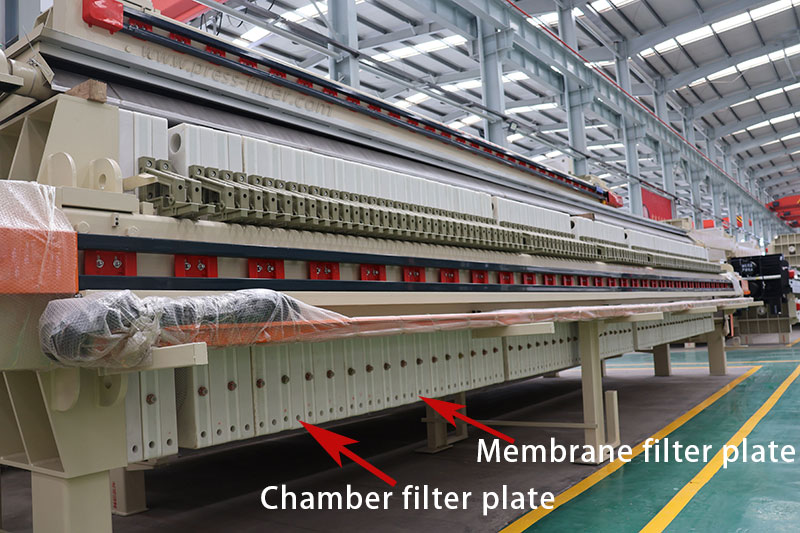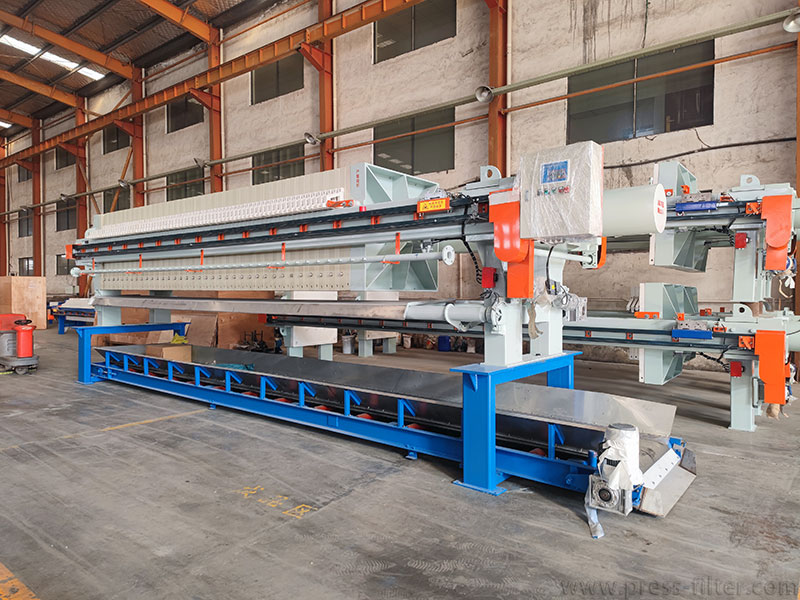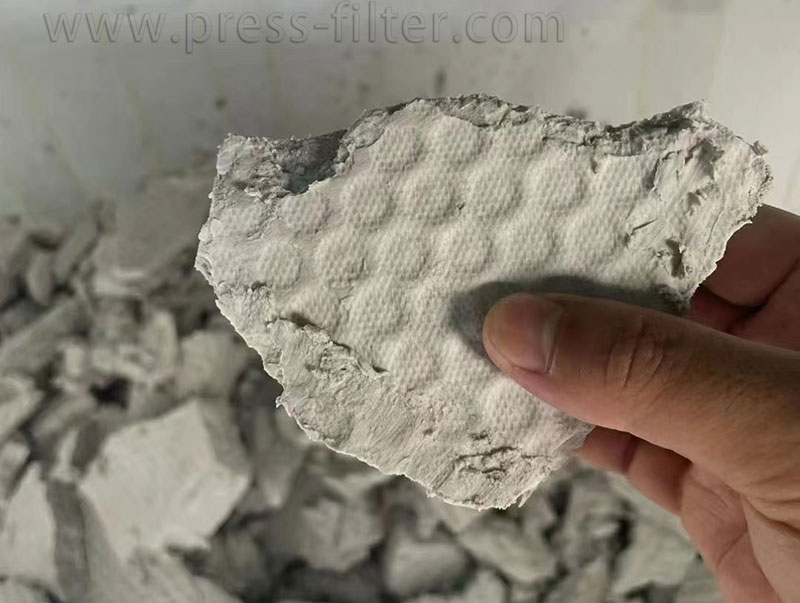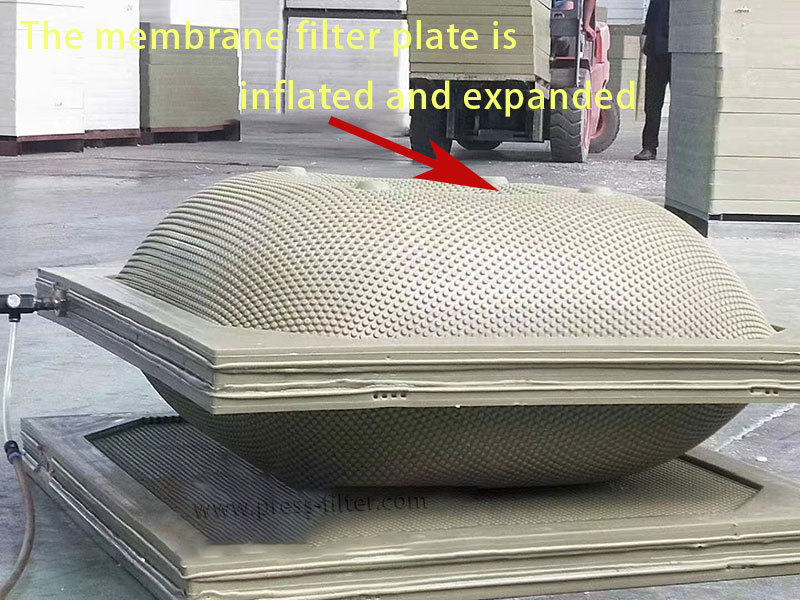Comparison Between Membrane Filter Press and Ordinary Chamber Filter Press
Filter presses are of various types and widely used. Different industries are suitable for different types of filter presses. Choose the appropriate size of filter press according to the daily processing volume. Each filter press has its own characteristics. This article will compare the membrane filter press and the chamber filter press and analyze their differences.
Membrane Filter Press VS Chamber Filter Press
Different filter plate structures and arrangements
First of all, the biggest difference between the diaphragm filter press and the chamber filter press is the filter plate. As the name implies, the diaphragm filter press uses a filter plate with a layer of rubber diaphragm, which can be filled with gas or liquid to expand the filter plate, thereby performing secondary squeezing on the filter cake to reduce the water content. However, the ordinary recessed filter plate does not have this diaphragm and only filters once. After the filtration is completed, the filter cake is directly unloaded without secondary squeezing.

Secondly, the arrangement of the filter plates of the membrane filter press is different from that of the recessed filter press. It is composed of a diaphragm filter plate and a chamber filter plate arranged alternately. However, the filter plates of chamber filter plates are ordinary filter plates, and all the filter plates are the same.
Different filter cake moisture content
Since the membrane filter press can realize secondary squeezing of the filter cake, the moisture content of the filter cake will be lower than that of the chamber filter press. For ordinary recessed filter presses, the moisture content of the filter cake is basically 50% to 75%, while the moisture content of the filter cake of the membrane filter press can reach 30% to 60%.
Different filtration efficiency
The secondary extrusion process of the membrane filter press can not only reduce the water content of the filter cake but also further improve the solid-liquid separation efficiency. This can reduce the filtration cycle and improve the overall filtration efficiency.
Since the chamber filter press does not have a secondary extrusion process, its filtration efficiency is relatively low, and it takes more time to achieve the expected filtration effect.
Different scope of application
Due to its special structure, the diaphragm filter press is suitable for industries such as chemical, pharmaceutical, and food that require high moisture content in the filter cake, especially in the application scenarios of processing sticky materials or requiring efficient dehydration.
Ordinary chamber filter presses are widely used in mining, metallurgy, sewage treatment, and other industries and are suitable for handling general filtering tasks.
Conclusion
In short, there are obvious differences in design and function between membrane filter press and ordinary chamber filter press. The former improves the dryness of filter cake by secondary extrusion and is suitable for filtration tasks with high requirements for filter cake moisture content; the latter has a simple structure and is suitable for general filtration needs. The choice of filter press should be determined according to your specific filtration requirements, budget, and usage scenarios.




